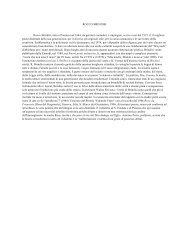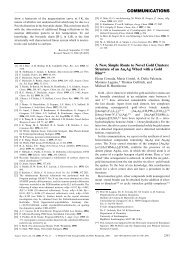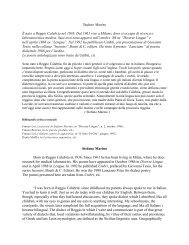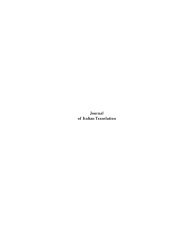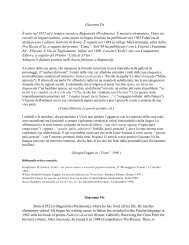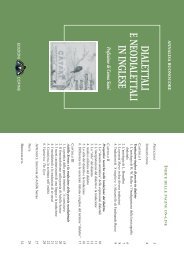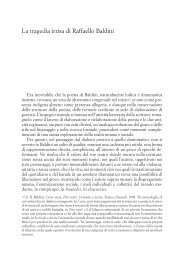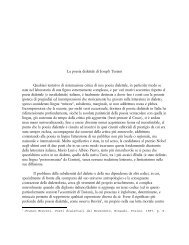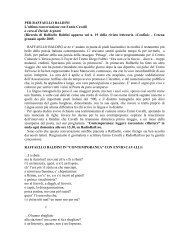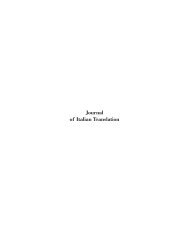Journal of Italian Translation - Brooklyn College - Academic Home ...
Journal of Italian Translation - Brooklyn College - Academic Home ...
Journal of Italian Translation - Brooklyn College - Academic Home ...
Create successful ePaper yourself
Turn your PDF publications into a flip-book with our unique Google optimized e-Paper software.
Book Reviews<br />
Bartolo Cattafi, Winter Fragments: Selected Poems 1945-1979,<br />
edited and translated by Rina Ferrarelli. Chelsea Editions, 2005,<br />
Pp 205.<br />
In the “poetic statement” that editor and translator Rina Ferrarelli<br />
places at the beginning <strong>of</strong> her collection <strong>of</strong> Bartolo Cattafi’s poems<br />
(Winter Fragments: Collected Poems 1945-79, Chelsea Editions, 2005),<br />
Cattafi reflects on his poetic origins: “As in a second childhood, I began<br />
to number the things I loved, to spell out in verse a naïve inventory<br />
<strong>of</strong> the world” (xiii). The poetic world that he constructs is a lyric<br />
yet universal one, made up <strong>of</strong> concrete matter and images, but no less<br />
metaphysically charged for that fact. As Ferrarelli puts it in her “Introduction”<br />
to Cattafi’s work, although Cattafi is firmly fixed in the linea<br />
lombarda tradition <strong>of</strong> engaging in “a poesia in re, a poetry embodied in<br />
things,” “these poets…are not afraid to be intellectual,…not afraid to<br />
make metaphysical leaps despite [Cattafi’s] exclusion <strong>of</strong> the intellect<br />
from the poetic process (xv).” In Ferrarelli’s new volume, the full<br />
breadth <strong>of</strong> Cattafi’s “naïve inventory” <strong>of</strong> human experience is now<br />
more accessible to an English-speaking public, whose encounter with<br />
this poet will be facilitated by Ferrarelli’s editorial choices no less than<br />
by her careful renderings <strong>of</strong> Cattafi’s lexical economy, formal integrity,<br />
and consistent rhythms.<br />
The volume’s presentation <strong>of</strong> Cattafi is thorough,<br />
contextualizing both the man and the writer with the aid <strong>of</strong> ample<br />
paratextual materials: a “Statement by the Poet,” an “Introduction”<br />
to “Cattafi’s place in Contemporary <strong>Italian</strong> Literature,” translation<br />
and selection notes by Ferrarelli, a brief chronology <strong>of</strong> Cattafi’s life,<br />
and informative (if sparse) poem content notes at the very end. Perhaps<br />
the most important properties <strong>of</strong> the volume’s paratext, however,<br />
are its facing text format and Ferrarelli’s work in selecting its<br />
poetic components. The decision to reproduce Cattafi’s original texts<br />
is a fortuitous one that gives the reader not only greater perspective<br />
on each poetic piece, but a more pronounced sense—even if only<br />
typographically—<strong>of</strong> Ferrarelli’s translation decisions and strategies.<br />
The reader with access to both source and target languages, moreover,<br />
will have the tools to trace the migration <strong>of</strong> Cattafi’s evoked<br />
world from <strong>Italian</strong> to Ferrarelli’s English.<br />
What emerges most powerfully from Ferrarelli’s editorial and



